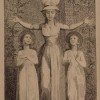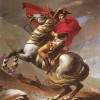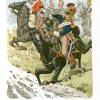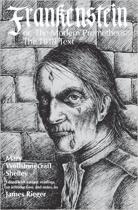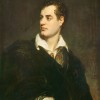Frankenstein
Created by Erin Garrett on Fri, 09/24/2021 - 15:45
This timeline maps significant historical events and biographical events against the timeline of the story
Timeline
Chronological table
| Date | Event | Created by | Associated Places | |
|---|---|---|---|---|
| 28 Jun 1712 to 2 Jul 1778 |
Jean-Jacques RousseauJean-Jacques Rousseau, born in Geneva, Switzerland, is named "The Father of Romanticism" because of his work in the Enlightenment period, where he wrote a very detailed and uncencored autobiography, titled Confessions. Rousseau's thinking was so forward, it did not conform to societal rules of the Elightenment period, paving the way for other creative minds to share their work in the upcoming era. This provided writers such as Mary Shelley, Edgar Allen Poe, and John Keats with a window of opportunity to show their creativity in their "abnormal" works. The individuality of their pieces brought forth the freedom, love of nature, and expressionism of the Romantic period. |
Evangelia Kaplanis | ||
| 5 May 1789 to 10 Nov 1799 |
French Revolution
On 5 May 1789, the Estates-General, representing the nobility, the clergy, and the common people, held a meeting at the request of the King to address France’s financial difficulties. At this meeting, the Third Estate (the commoners) protested the merely symbolic double representation that they had been granted by the King. This protest resulted in a fracture among the three estates and precipitated the French Revolution. On 17 June, members of the Third Estate designated themselves the National Assembly and claimed to represent the people of the nation, thus preparing the way for the foundation of the republic. Several pivotal events followed in quick succession: the storming of the Bastille (14 July), the approval of the Declaration of the Rights of Man and of the Citizen (26 August), and the march on Versailles that led to the enforced relocation of the royal family to Paris (5-6 October). These revolutionary acts fired the imagination of many regarding the political future of France, and, indeed, all of Europe. The republican period of the revolution continued in various phases until 9-10 November 1799 when Napoleon Bonaparte supplanted the government. ArticlesDiane Piccitto, "On 1793 and the Aftermath of the French Revolution" |
David Rettenmaier | ||
| 1792 |
"Vindication of the Rights of Woman" is PublishedMary Wollstonecraft's A Vindication of the Rights of Woman is considered a “trailblazing” work for feminism (Britannica). In the piece, Wollstonecraft addresses womanhood of the middle class and criticizes what was considered a female education at the time. While men receive an education of the mind and body, women are taught to act weak, to dedicate their time to finery and fashion. Neglecting to teach women anything other than how to be attractive on the “marriage market”, will only leave them without profession, without money, and without honor or promise of redemption if they are left or divorced by their husbands. Wollstonecraft believed that women could contribute more to society than just a wife and mother. She writes, “I attribute to a false system of education, gathered from the books written on this subject by men who, considering females rather as women than human creatures ...are only anxious to inspire love, when they ought to cherish a nobler ambition, and by their abilities and virtues exact respect”. The thinking at this time was that women’s obsession with marriage and delicacy was natural, but Wollstonecraft uses her work to demonstrate that this is a result of women’s artificial education. She argues that if men and women are raised with the same aspirations, than the differences between them will/can be considered more natural. She suggests a total education — one that shapes the whole person — of both sexes. This, she argues, will benefit all of society. Although Wollstonecraft’s work was well-received within within her own intellectual circle, the rest of society’s reaction was negative. The ideas expressed in A Vindication of the Rights of Woman were very radical for her time, but would later provide a solid platform for Romantic feminists who worked to improve the lives of women. To learn more about the reactions to Wollstonecraft’s work, click here. To learn more about Romantic Feminism, click here. To learn more about Mary Wollstonecraft, click here. Sources: https://www.britannica.com/biography/Mary-Wollstonecraft http://web.utk.edu/~gerard/romanticpolitics/feminism.html https://www.bl.uk/collection-items/mary-wollstonecraft-a-vindication-of-the-rights-of-woman http://shelleysghost.bodleian.ox.ac.uk/godwin-meets-mary-wollstonecraft#Description |
Elizabeth Schafer | ||
| May 1797 to 1 May 1821 |
Bank Restriction Period
The Bank Restriction Act codified the suspension of specie payments for a limited period and authorized the use of Bank of England notes as de facto currency (37 Geo III c. 45). The strict time frame of the Act bolstered public confidence in Bank of England notes by indicating that they would be redeemable for specie payments at a designated point in the foreseeable future. However, despite the Bank of England’s bullion reserve increasing as gold flowed into its coffers, thus enabling specie payments to be made, successive parliaments renewed the Bank Restriction Act annually until 1821. During these twenty-four years, known as the Bank Restriction Period, the Bank of England operated as a wing of the British Government, helping to finance the Napoleonic wars through its bullion reserve and by regulating the issue of credit. The Bank Restriction Act unwittingly encouraged banknote forgery on an unprecedented scale. ArticlesMark Crosby, “The Bank Restriction Act (1797) and Banknote Forgery” |
David Rettenmaier | ||
| 10 Sep 1797 |
Death of Wollstonecraft
ArticlesAnne K. Mellor, "On the Publication of A Vindication of the Rights of Woman" |
David Rettenmaier | ||
| 9 Nov 1799 to 18 Jun 1815 |
Napoleonic Wars
Historians do not agree on the exact beginning or end of the wars. November 9, 1799 is an early candidate since that is when Napoleon seized power in France. Hoping to ease the difficulty, historians date by isolated wars. They disarticulate the Napoleonic Wars in a linear series:
The successive numerical coordinates for the Coalitions offer regularity, but that regularity is undercut by the shifting make-up of that Coalition (sometimes Prussia was in, sometimes not; sometimes Russia, sometimes not) and by the discontinuity and ambiguity of the dates. Articles |
David Rettenmaier | ||
| 6 Apr 1814 to 26 Feb 1815 |
Napoleon exiled to ElbaNapoleon was exiled to Elba, an island in the Meditteranean, after he abdicated on 6 April 1814. He spent nine months and 21 days on the island, then attempted to retake his empire, leaving the island on 26 February 1815. Napoleon was definitively defeated at the Battle of Waterloo on 18 June 1815. |
Dino Franco Felluga | ||
| 18 Jun 1815 |
Battle of Waterloo
Related ArticlesSean Grass, “On the Death of the Duke of Wellington, 14 September 1852″ Mary Favret, "The Napoleonic Wars" Frederick Burwick, “18 June 1815: The Battle of Waterloo and the Literary Response” |
David Rettenmaier | ||
| circa. Summer 1816 to circa. 1823 |
Mary Shelley Writes and Publishes "Frankenstein"Locked indoors due to a rainstorm in 1816, Mary Shelley, along with her husband, Percy, and their friend, Lord Byron, had a ghost story competition. Impressed by the story Mary told based off a dream she had had, Lord Byron and Percy encouraged her to write it down. Shelley finished writing in summer of 1817, and published Frankenstein or The Modern Prometheus on January 1, 1818 anonymously due to fear of how the public would receive a novel written by a woman as well as the philosophical ideas contained therein that challenged Romantic ideals of beauty and nature. It wasn't until the second edition of the novel in 1823 that Shelley revealed herself as the true author, however, despite scholars' admissions to the contrary, rumors spread that Percy had written Frankenstein instead of Mary, and some of these rumors persist even still today. This is due in part to Percy's involvement in the writing by offering corrections and revisions in her notebooks, though that is all they were. Indeed, much of the ongoing conversation regarding Mary Shelley refuses to discuss Shelley in her own right and instead focuses on her relationship with Percy, or her mother's or father's literary accomplishments, or even stories critics claim to have inspired her iconic monster (such as the Greek myth of Pygmalion). The fact remains that Mary Shelley authored Frankenstein and is (at least in part) responsible for the birth of modern science fiction as we know it today. |
Emily Probst | ||
| 1818 |
Mary Shelley, Frankenstein (1818)Frankenstein, Mary Shelley 1818Summary:Initially, the novel begins with a captain who wishes to be the first to go to the North Pole. However during such pursuit, he stumbles upon Victor Frankenstein, who, when asked how he got to such a place, begins to tell his tale as he speaks on his childhood and curiosity with science. He then goes on to explain how he went to an university with his best friend, Henry, where he pursues the same knowledge he learned from the books he read when he was young. It is here does he first gets the idea to build his creature. He explains he has done so successfully, yet terrified by his creation, and ran away back to Geneva to continue his life. From that point on, the creature, saddened due to his abandonment and constant beratement, pursued Victor and his family in order to learn why his master and creator has made him only to abandon him. The creature first attacks and kills William, Victor’s brother, which he plants on Justine leading to her death. This causes Victor to confront him. It is then that the creature tells his tale, and threatens Victor to make him a companion, or he will be with Victor on his wedding night. Victor complies only for a moment before he is madden about wasting his time, and destroys his project before he even finishes. With that, he goes to marry his fiance, Elizabeth, and as predicted, he is visited by the creature who kills his wife. The novel then comes full circle back to the beginning as The Captain now knows Victor and the creature are pursuing each other across the North pole. Victor then dies, and the captain watches as the creature cries over his body. Humanness:Frankenstein’s monster was inorganically created using human body parts, making him primitive form of Artificial Intelligence. Frankenstein “worked hard for nearly two years, for the sole purpose of infusing life into an inanimate body” (Shelley, 35). He created life where life seemingly could not be created, and was so horrified by his creation that he abandoned it and fled. The scientific assembly of his body makes the creature “artificial,” and the creature was created in such a way that gives him the capacity to imitate and gain intelligence. Like modern day representations of A.I., Frankenstein’s monster learns through observation and imitation. When the creature is hiding, he observes the occupants of the neighboring cottage through a crack in the wall. He notices they communicate through language, and mimics their mouths and the sounds, developing an understanding of their language and a means to communicate. Frankenstein’s monster is not human, but it closely resembles humans: it is beautifully built yet terribly ugly. Because of its horribly close resemblance to humans, its flaws reveal problems of our human society. Fear:Fear itself can distance the human from numerous negative associations that are actually exclusively connected to humanness. Frankenstein’s creature is a monster; “monster” in itself is a word that seems to lie on the opposite of human, the human’s enemy by design. Yet, the creature’s origins lie in the human desire to create; his teachings in morals strictly coming from the way humans around him treat him and themselves. Even the pieces that make up his physical composition are human body parts. Yet he is the ‘unknown’ or must remain that way to in order to stop the real fear of self-reflection amongst society and the questioning what humanness actually is. That is to say, it can be seen as quite a human trait to be affected by corruptive environments; to manipulate and lie much like the creature did for Justine when he framed her for William's death. To seek revenge for mistreatment and abandonment. This is true fear: to see monstrous traits as human. Sources:Frankenstein, Mary Shelley 1818 -Hannah and Kayla |
Hannah Resnick | ||
| 1818 |
Mary Shelley's: FrankensteinMary Shelley (1797-1851) was a famous novelist whose best-known work is Frankenstein; or, The Modern Prometheus (1818), although she published other books including The Last Man (1826) and Lodore (1835) (“Mary Shelley”). Frankenstein interestingly opens and closes in the epistolary format just like the novel Barford Abbey, although the main bulk of the novel is written in narrative form (“Frankenstein, An Introduction To”). The protagonist of the novel, Victor Frankenstein, creates a creature from the parts of corpses but quickly abandons it out of fear once the creature is brought to life. The creature faces constant rejection from society and eventually goes after Frankenstein for bringing him alone into a cold world. This novel is extremely important as it was one of the first novels to merge the gothic and romantic genres (Sundaram). The combination of the horror imagery with the romantic emphasis on emotions caused Frankenstein to become a classic which is still widely taught in many classrooms across America today.
“Frankenstein, An Introduction To.” Nineteenth-Century Literature Criticism, vol. 170, 2006. “Mary Shelley.” Biography.com, A&E Networks Television, 28 Feb. 2020, www.biography.com/writer/mary-shelley. Sundaram, Mark, director. Sublime: The Aesthetics & Origins of Romanticism. YouTube, YouTube, 2 Feb. 2016, www.youtube.com/watch?v=au-z2jVaTNk&feature=youtu.be. |
Christian Wong | ||
| 1 Jan 1818 |
Frankenstein; or, The Modern PrometheusMary Shelley releases the first edition of Frankenstein. The more popular modern version was released on October 31, 1831, which includes the introduction that explains the novel's origins at Villa Diodati. Frankenstein follows many tenets of Romanticism and takes much influence from Milton's Paradise Lost, which is quoted to open to novel and is read by Frankenstein's monster during the events that take place. The novel focuses on a number of themes, one of the most prominent of which is the idea of "nature against nurture" (itself a key idea of Shelley's mother Mary Wollstonecraft's Vindication of the Rights of Women). Contrary to thinking in oral or even medieval societies, Romanticism, where characters are unchanging, readers are encouraged to ask the question on what would have happened to the monster had Frankenstein not screamed and ran away from it. The monster shows the ability to be a monster, but it also shows the ability to show empathy and care. The scientist Frankenstein himself worries constantly about the wholly unnatural creature that he has brought into the natural world and what should happen if he gives the monster what it wants - someone to love. Much like the thought of Romanticism that perhaps Satan was the party in the right during Paradise Lost, the monster's growth mentally and emotionally with his own deeply flawed Maker in Frankenstein invites to question the rights of the individual. The vivid descriptions of nature and the thought-provoking themes of the novel make it a standout of the Romantic era and a phenomenal story to this day. |
Mark Magurany | ||
| circa. 1819 to circa. 1832 |
Percy Byshee Shelley writes "Mask of Anarchy.""Mask of Anarchy" is written in 1819 by Shelley following the Peterloo Massacre. It is a call for freefom and a nonviolent resistance. |
Amanda Hilsinger | ||
| 5 May 1821 |
Death of NapoleonNapoleon Bonaparte died on 5 May 1821 while in Exile on the island of Saint Helena. Image: Horace Vernet, Napoleon on his Death Bed (1826). |
Dino Franco Felluga | ||
| The start of the month Summer 1822 to The start of the month Summer 1822 |
Percy Shelley's Death - 1822Percy Bysshe Shelley died on July 8th, 1822 at the age of 29. He died off the coast of the Gulf of Spezia, which is on the north-western coast of Italy and in the northern part of the Tyrrhenian Sea. His boat was overturned during a storm that is described as happening suddenly. Shelley and his wife, Mary Shelley, had a house on this Ligurian coast, and Percy was inspired by the views and began a poem called "The Triumph of Life" -- a bit ironic, isn't it? It seems that although Percy enjoyed the location at first, Mary did not enjoy it, and suffered a miscarriage that caused both of the parents some strife. Percy apparently was struggling and was seeing apparitions and having what could be described as hallucinations. He also attempted to get prussic acid -- enough for a lethal dose, but it is unclear if he meant to kill himself. He sailed down the coast on July 1st, and on July 8th made plans to return home -- still choosing to travel despite knowing the weather was not going to be good. Their boat was spotted during a storm flying too much sail -- the sailors who found them offered to help and advised them to lower sails, but Shelley refused. Their bodies were found days later -- Shelleys' hands and face had been decomposed. His body was buried and then later dug up to be burned on a pyre -- his heart "refused to burn" and Mary Shelley kept it until her death, wrapped in a cloth. |
Monet Jorgenson | ||
| 15 Oct 1822 to 30 Jul 1823 |
The Liberal
Articles |
David Rettenmaier | ||
| 1823 |
Mary Shelley's FrankensteinThe first edition of Mary Shelley's Frankenstein was published anonymously in 1818, but the version with her name on the cover wasn't published until 1823. Shelley gained inspiration from traveling around Europe with future husband Percy Shelley and Lord Byron. They participated in ghost story telling competitions while traveling around, which is where some of her inspiration came from. Frankenstein tells the tale of Victor Frankenstein, a young scientist who creates a hideous creature and the trials of the creature after being abandoned by Frankenstein. The novel implements the frame story narrative style of storytelling, which was unique at the time. Her novel fuses together the genres of Gothic fiction with the notions of the Romantic movement. It's also seen as early science fiction work. The idea for the novel came to Shelley in a dream that later became the basis for Frankenstein. Mary Shelley's novel was hugely influential on the world of science fiction and horror. Image source: http://frankensteinia.blogspot.com/2008/08/mary-shelley-meets-frankenste... |
Caroline Brown | ||
| 1829 |
Benjamin Robert Haydon paints portrait of Napoleon at sunsetin 1829, Benjamin Robert Haydon painted a first version of Napoleon Musing after Sunset, which was exhibited at the Western Exchange in 1830. Haydon later painted 23 versions and replics of this work, including the one pictured here. The later full-length version was titled Napoleon Musing at St. Helena. In 1831, William Wordsworth wrote of this painting, "If I can command my thoughts I will write something about your Picture, in prose for the Muse has forsaken me - being scared away by the villainous aspect of the Times." Image: Benjamin Robert Haydon, Napoleon Musing at St Helena. This work is in the public domain in its country of origin and other countries and areas where the copyright term is the author's life plus 100 years or less. |
Dino Franco Felluga | ||
| 1931 |
James Whale, Dir., Frankenstein (1931)James Whale's adaptation of Frankenstein was one of the first major film adaptations of the story, spurring a culture of sequals and new adaptations. In fact, the portrayal of the creature by Boris Karloff became one of the most infamous and replicated film characters in history. Today, the creature, as shown to the left, is familiar to most Americans, even if they have not seen Whale's film. Whale's interpretation highlights important questions that the original story provides. What does it mean to create life? What are the consequences of humans playing a role in creation? What is the relationship between God and mankind? What happens when we let a desire consume us? Whale's film addresses these questions through specific film techniques, including extreme close ups and name changes. In the clip below, Whale focuses on the ideas of both innocence and the process of learning, raising questions of whether the monster is at fault for the murders he commits.
|
Elizabeth Paul |


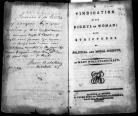
![Cruikshank note[1]](http://www.branchcollective.org/wp-content/uploads/2012/01/Cruikshank-note1-100x100.png)
